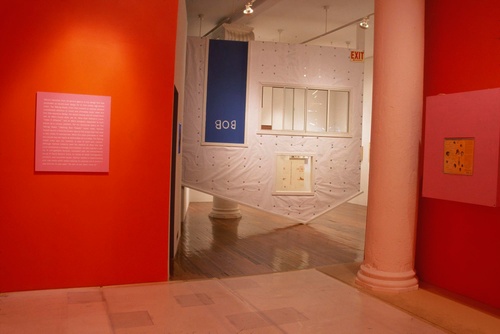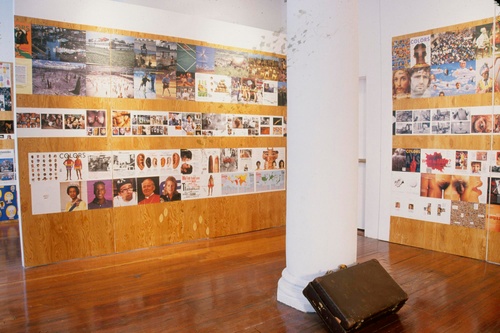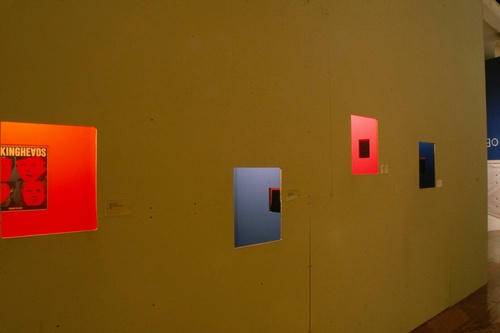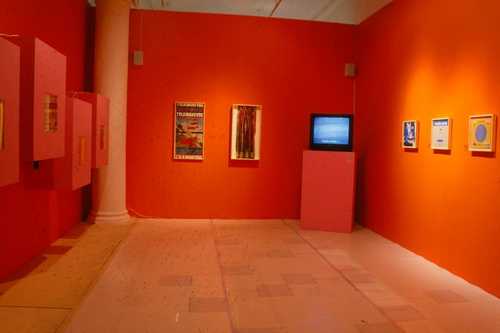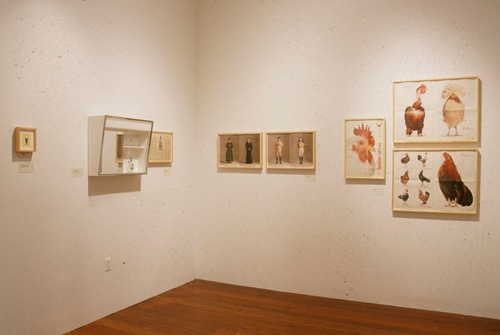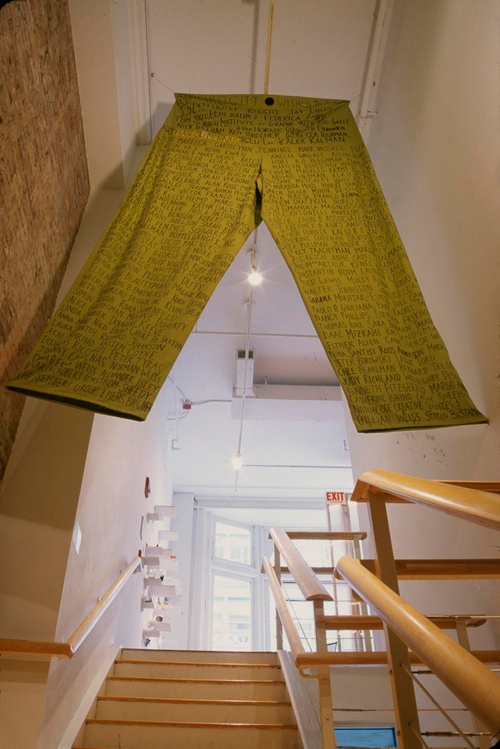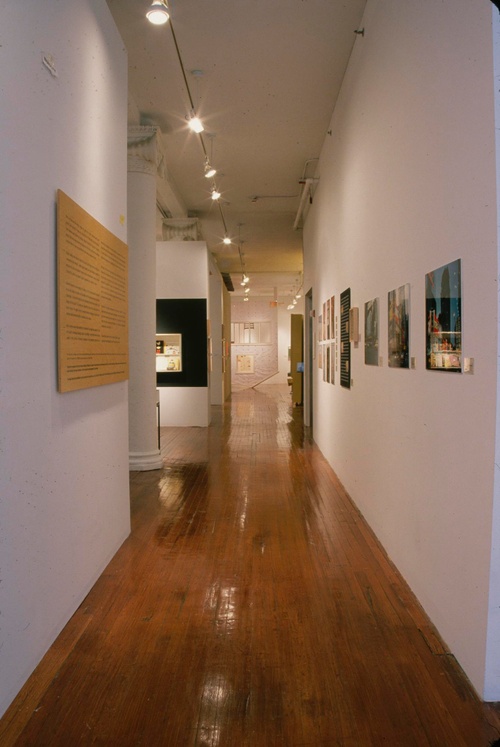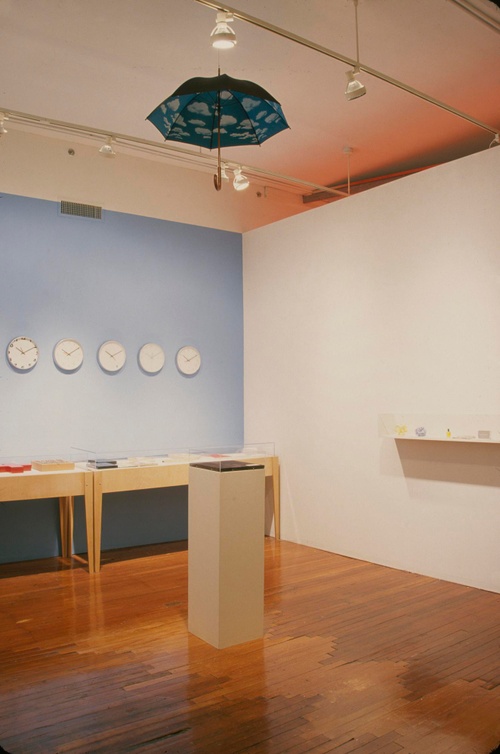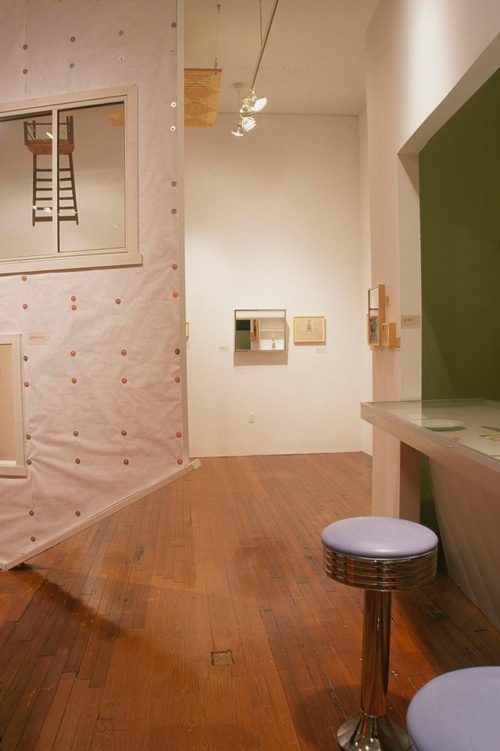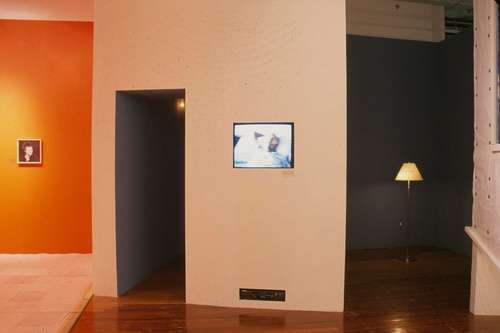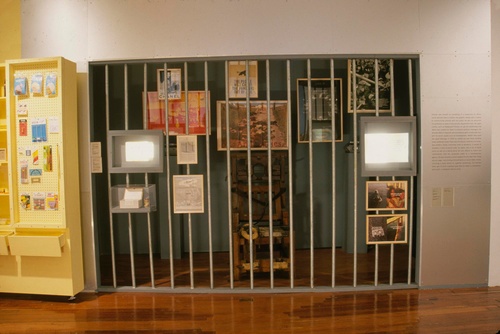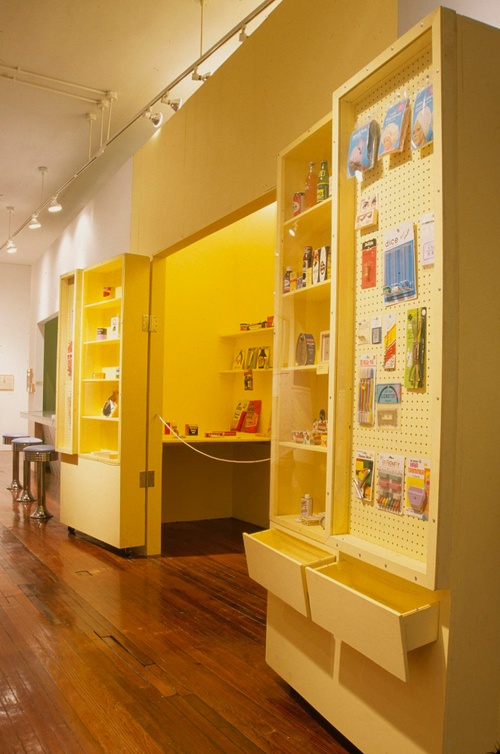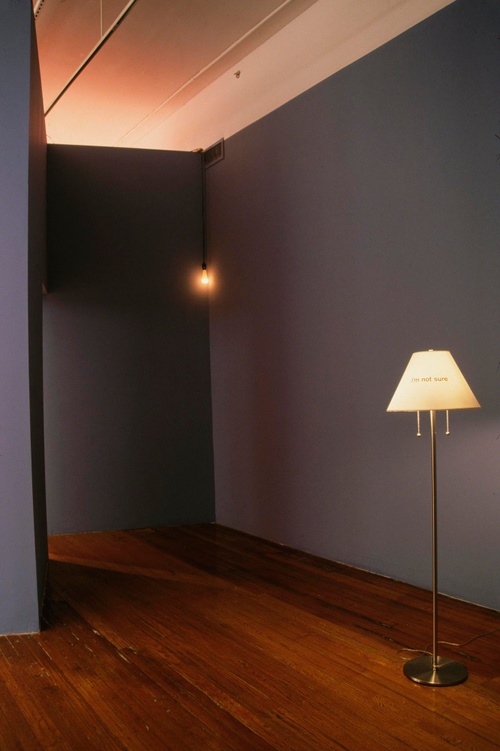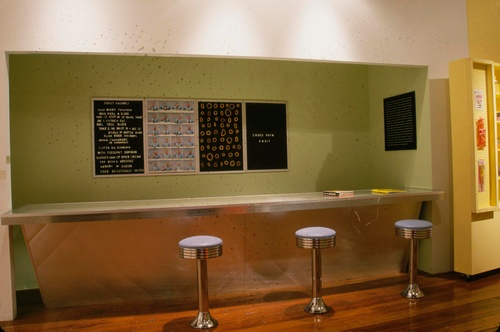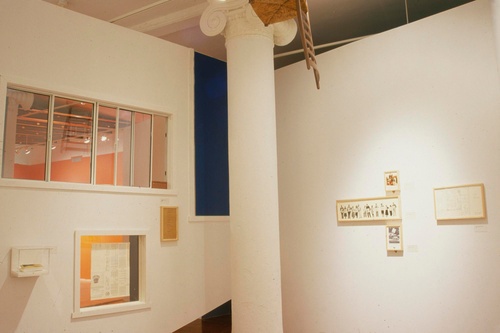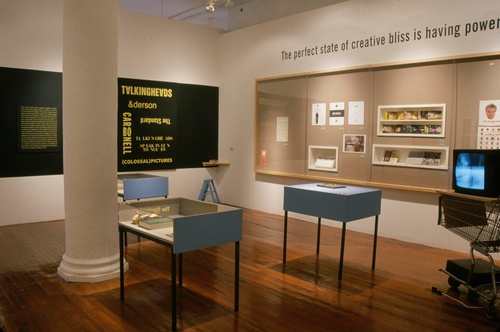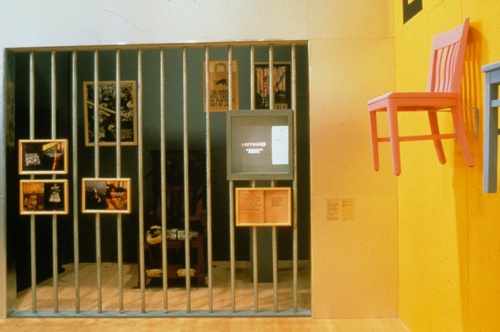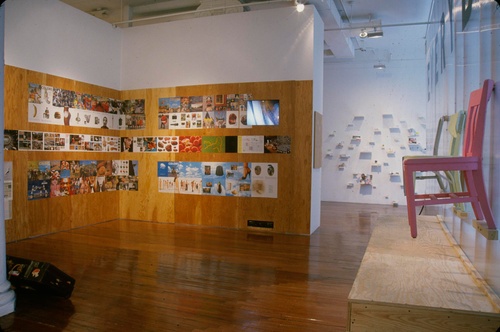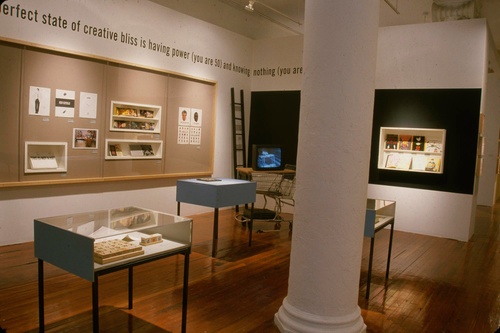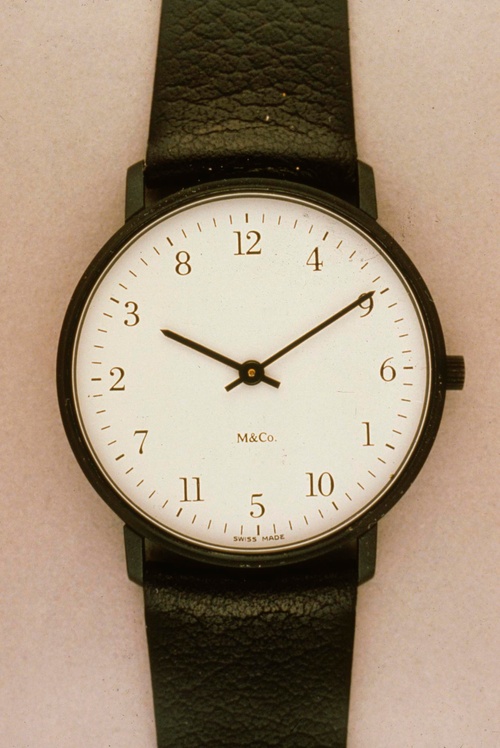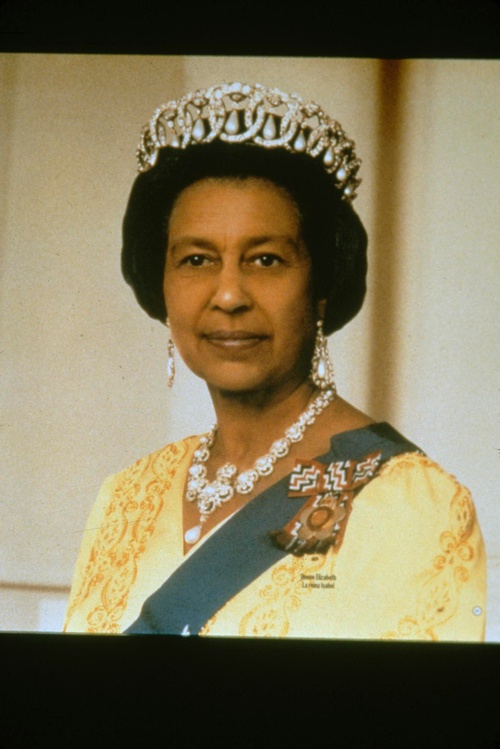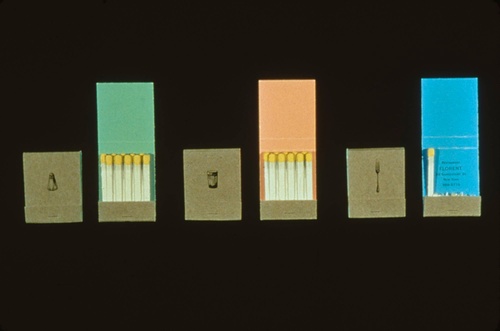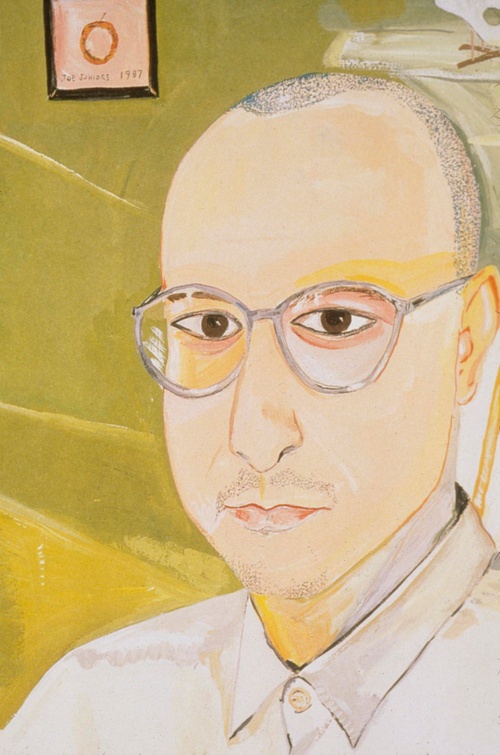Tiborocity: Design and Undesign by Tibor Kalman, 1979-1999
Tiborocity: Design and Undesign by Tibor Kalman, 1979-1999
“Tiborocity: Design and Undesign by Tibor Kalman, 1979-1999” was organized by Tibor Kalman, in collaboration with Aaron Betsky, San Francisco Museum of Modern Art curator of architecture, design and digital projects. Although Kalman died on May 2, 1999 after a long illness, the exhibition proceeded as a tribute to his life and career. “Tiborocity” consists of approximately 200 works drawn from Kalman’s personal collection and the archives of M&Co, Kalman’s design firm in New York.
“Tiborocity” features Kalman’s ideas and projects in a setting designed by Kalman to evoke a mythical “village” located in a non-industrial country. The village is divided into nine sites that serve as metaphors for various themes that have influenced Kalman’s oeuvre. These include a classroom, a humor house, a vernacular store, a coffee shop, a public square, a jail cell, a music and video shop, a museum of practical ideas and—with a vision toward the future—a forest beyond the village. Each theme will be presented visually, experientially and in three dimensions.
The look of the village and the exhibition is an unlikely mixture of Modernism and the vernacular, the past and the future. Kalman and M&Co’s projects relating to each theme are displayed within the settings. Film and video projects are displayed on video monitors, and listening stations are available for visitors to hear excerpts from M&Co-designed CDs and albums.
Over the past twenty years Tibor Kalman and the work of M&Co have rejected the slick, superficial application of design that was so widespread in the 1980s for a sort of “undesign” that embraced the vernacular. In his goal to use design as a language that communicates something meaningful, Kalman’s work explored and encompassed not just the print medium, but also film, video and product design. This presentation acknowledges the iconoclastic genius of a designer whose practice had an enormous impact upon our culture.
Born in Budapest and a resident of the United States since 1956, Kalman was raised in Poughkeepsie, New York and educated at New York University. In the 1970s, he worked at a small bookstore that eventually became Barnes & Noble. He soon supervised their in-house design department, a position he held for eleven years. In 1979 Kalman established the multidisciplinary design firm M&Co, which appealed to a generation of clients who were receptive to popular culture. His clients ranged from corporations such as The Limited and Chiat/Day advertising to rock bands, including Talking Heads, to governmental organizations such as the New York State Urban Development Corp. and the 42nd Street Redevelopment Project. M&Co’s work was characterized by an affinity for vernacular advertising and signage, and an affection for humor, found image and brash typography.
In 1990 Kalman became the founding editor-in-chief of Colors, a Benetton-sponsored magazine. Published as “a magazine about the rest of the world,” more than 500,000 copies of the magazine were distributed globally. Colors explored the ways in which people are both similar and at the same time very different. Controversial images, including a white Spike Lee, a black Queen Elizabeth and an Asian Pope John Paul II, served to raise readers’ own consciousness of racism. Colors’ design mantra was to present vast amounts of information as clearly and concisely as possible; the magazine was image-driven so it appealed to the widest possible audience. In fact, Kalman’s last issue of Colors was designed without any text, only images. At the time of his departure from Colors in 1995, Kalman had, in the words of one critic, “evolved a design language that functioned on a global level, by allowing a culturally diverse readership to contemplate both the particular and the universal concept.” Kalman returned to New York in 1995 and re-established M&Co in 1997, and subsequently engaged in a range of design work, including book projects and nontraditional art exhibition designs for NYNY: City of Ambition (1996) at the Whitney Museum of American Art and “Keith Haring” (1997) at both the Whitney and SFMOMA.
“Tiborocity: Design and Undesign by Tibor Kalman, 19791999” is accompanied by the 1998 Princeton Architectural Press publication Tibor Kalman: Perverse Optimist.
